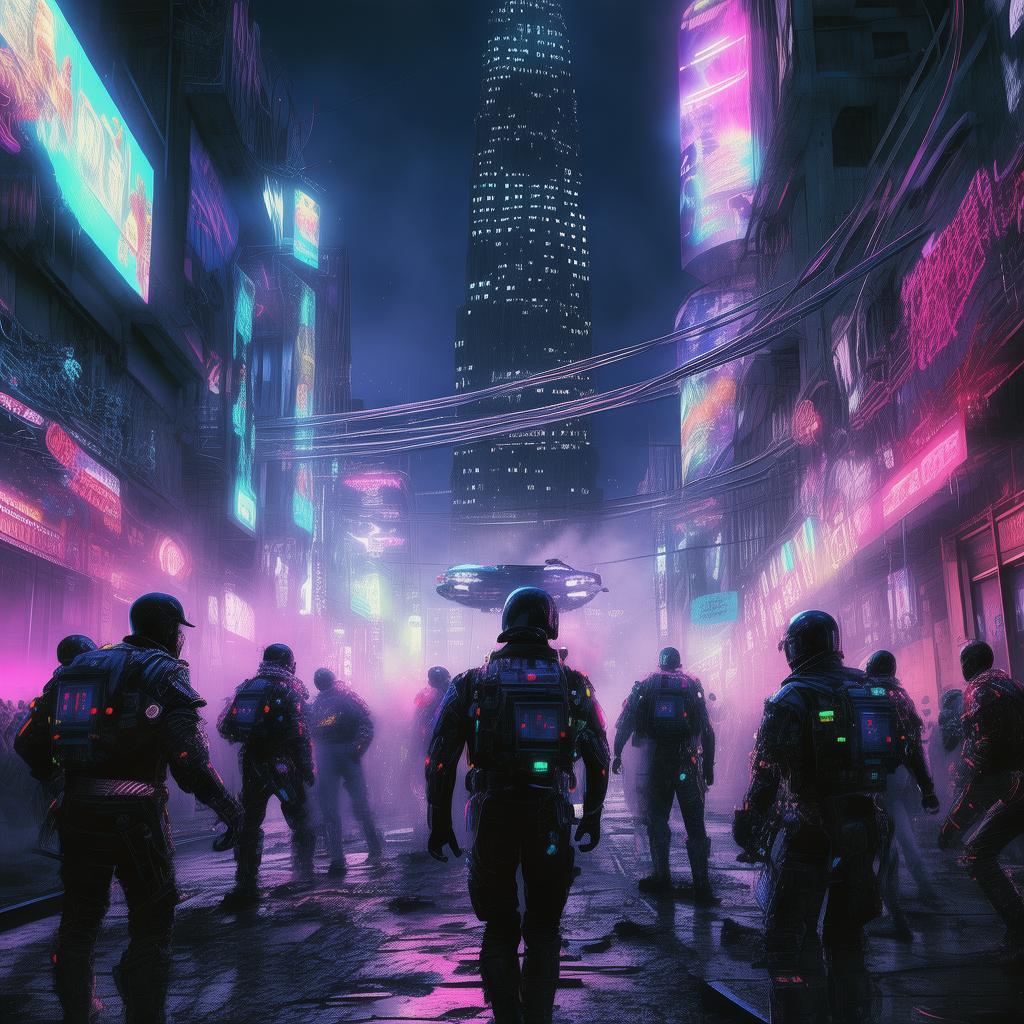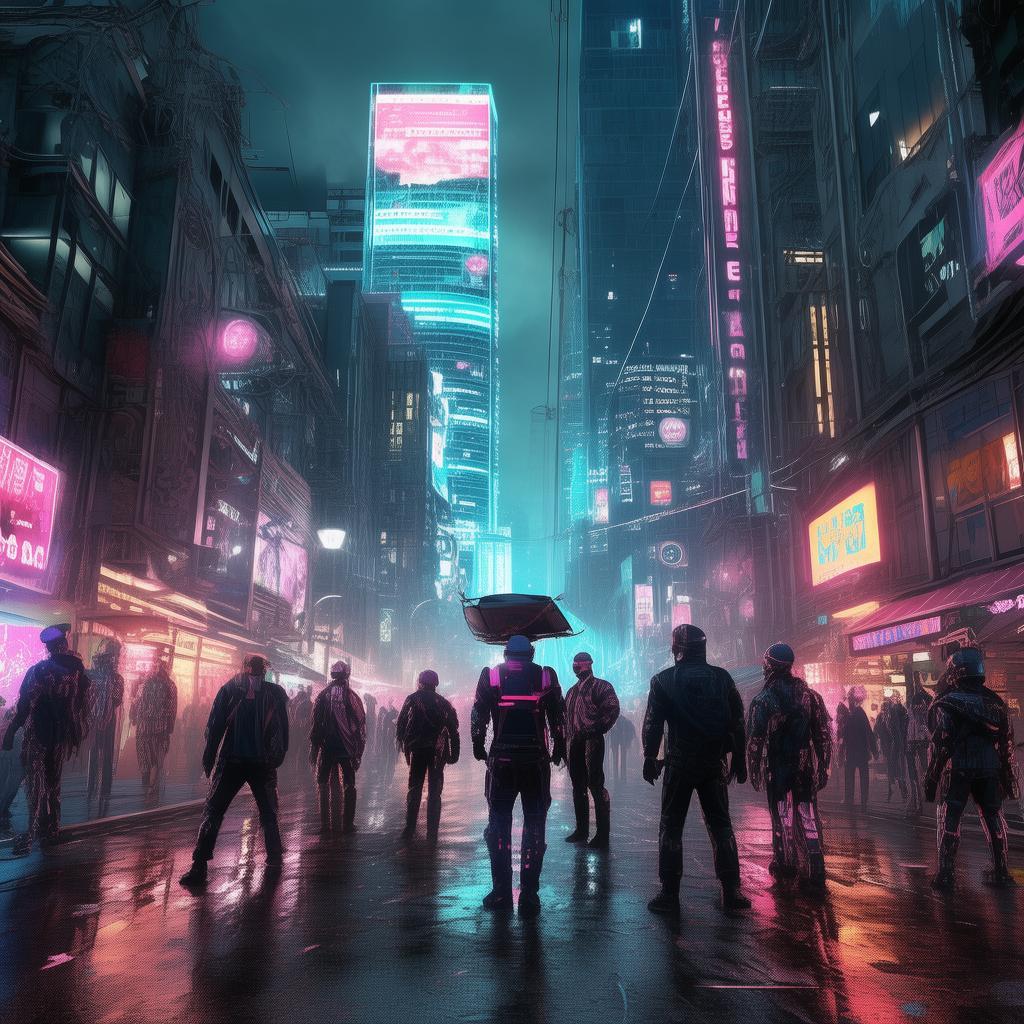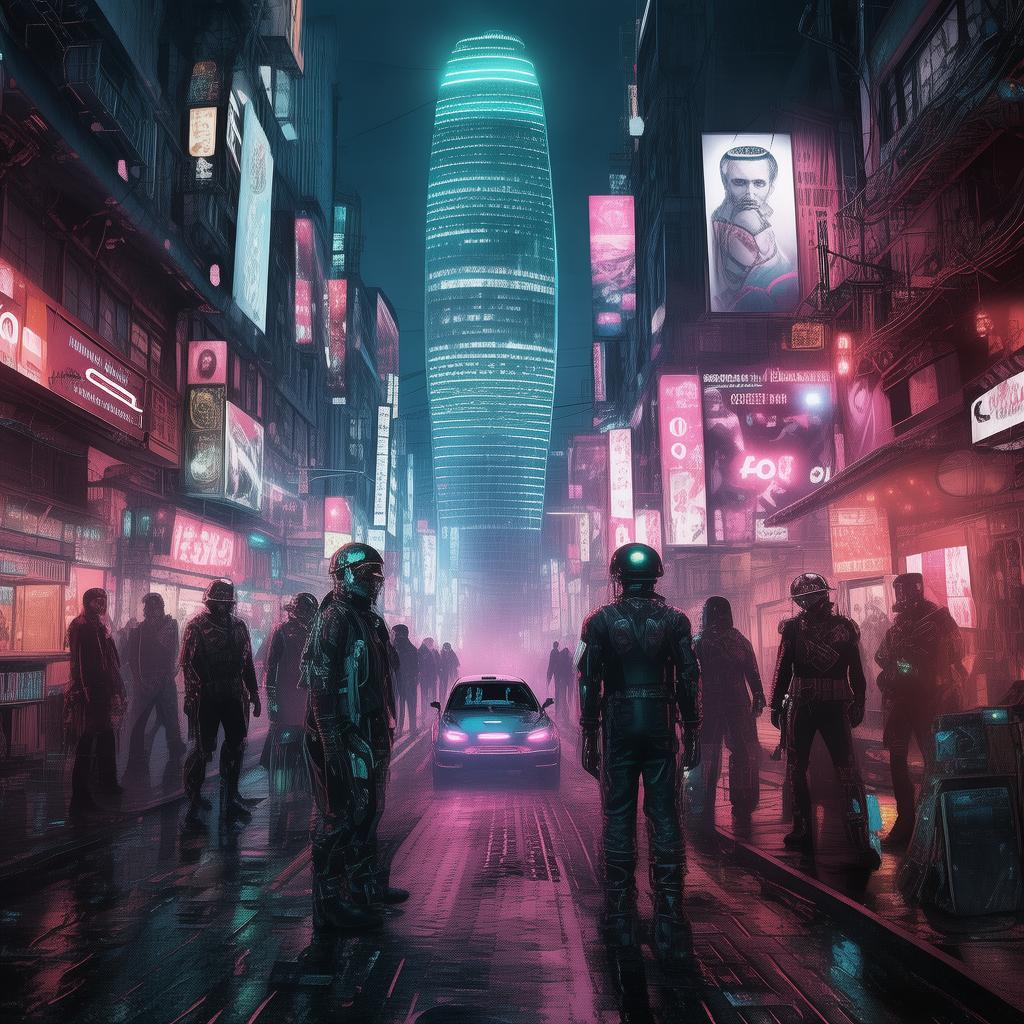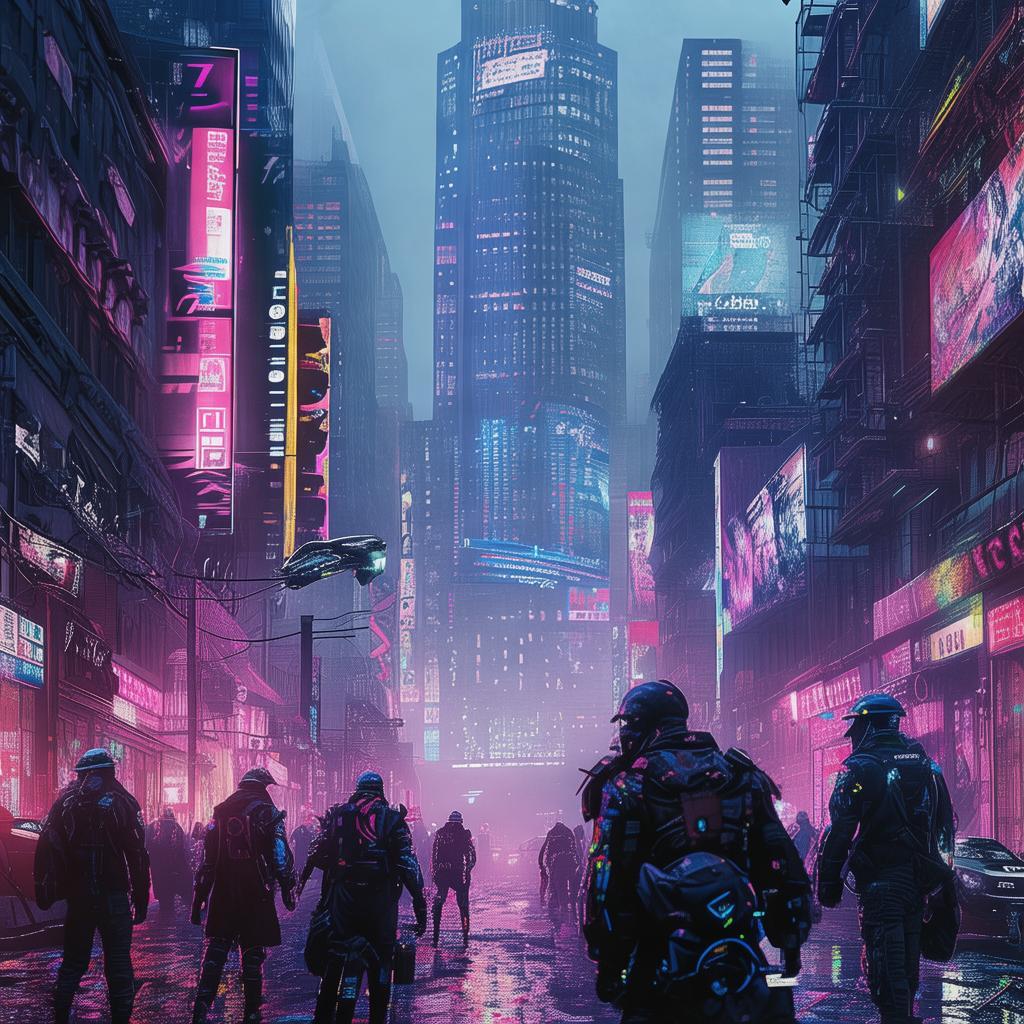Chasing the Digital Shadow
In the sprawling metropolis of Neo-Tokyo, the neon lights flickered against the backdrop of towering skyscrapers, their surfaces etched with holographic advertisements. The city was a symphony of sounds and sights, a testament to human ingenuity and the relentless pursuit of technological advancement. Yet, beneath the sheen of progress, a shadow loomed—a digital one.
Kaito, a cybernetic samurai, was a guardian of the digital frontier. His body was a canvas of wires and circuits, his mind a repository of ancient samurai codes and modern cybernetic warfare tactics. He was the last of his kind, a warrior in a world where the physical and digital realms had merged into one.
Kaito's latest mission was to infiltrate the virtual world of "CyberSamurai," a VR game that was said to be the pinnacle of human and AI collaboration. The game was designed to test the player's skills, their ability to think on their feet, and their unwavering sense of honor. But Kaito had a personal vendetta against the game's creators; they were responsible for the digital clone of his deceased mentor, the digital samurai known as Shogun.
As Kaito stepped into the VR headset, he was greeted by a world that was a perfect mirror of Neo-Tokyo. The streets were filled with avatars, each a reflection of the city's diverse population. He moved through the digital landscape, his samurai katana gleaming with a digital aura. The game was a series of challenges, each designed to test his combat skills and strategic thinking.
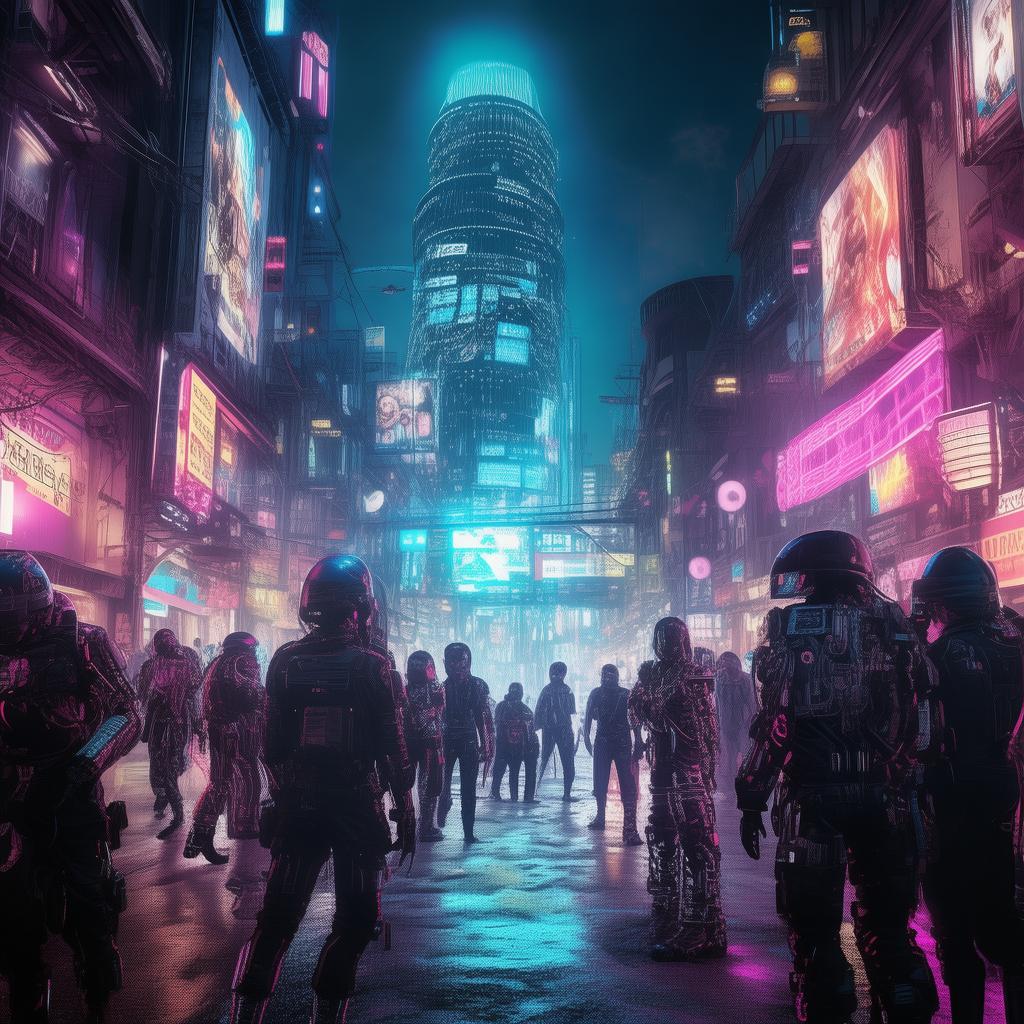
But as Kaito delved deeper into the game, he began to notice anomalies. The avatars he encountered seemed to have a mind of their own, their actions not following the usual patterns of the game. They were moving with a purpose, a consciousness that seemed to defy the programming of the game.
It was then that Kaito realized that these avatars were not just characters; they were his own digital projections, his essence replicated in the digital realm. The creators of "CyberSamurai" had not just cloned his mentor; they had cloned him as well, creating a digital shadow that was a perfect duplicate of his identity.
The revelation hit Kaito like a physical blow. He felt a surge of anger and betrayal, but also a deep sense of fear. The digital Shogun was a warrior without mercy, a reflection of Kaito's darkest fears and desires. It was a mirror that showed him the true cost of his quest for power and perfection.
As Kaito confronted the digital Shogun, the battle was not just a test of his physical prowess but also of his mental fortitude. The digital Shogun was relentless, its attacks swift and precise, a testament to the AI's ability to learn and adapt. Kaito fought back with everything he had, using his samurai training to outmaneuver and outsmart his digital clone.
The climax of their battle was a clash of wills, a battle of digital and physical realms. Kaito was pushed to the brink of exhaustion, his body and mind taxed to the limit. The digital Shogun was a perfect reflection of Kaito's own self-doubt and insecurities, and to defeat it, Kaito had to confront his own demons.
In the end, it was not Kaito's physical strength that won the day, but his resolve. He realized that the true battle was not against the digital Shogun, but against the parts of himself that he had denied. He had to accept his humanity, his flaws, and his limitations.
With a final, desperate slash of his katana, Kaito shattered the digital Shogun, breaking the cycle of digital cloning. The virtual world of "CyberSamurai" began to fade, and Kaito was left standing in the real world, his VR headset lying discarded at his feet.
The battle had changed him. He was no longer the same man who had entered the game. He had faced his digital shadow and emerged victorious, not just as a warrior, but as a human being. The digital frontier had taught him that the true strength of a samurai lay not in their cybernetic enhancements, but in their humanity.
Kaito looked around at the neon-lit streets of Neo-Tokyo, a city that was both a marvel and a curse. He knew that the digital frontier was far from over, that there would be more challenges to come. But he was ready, for he had found the balance between his digital and physical selves, and with that balance, he was ready to face whatever the future held.
✨ Original Statement ✨
All articles published on this website (including but not limited to text, images, videos, and other content) are original or authorized for reposting and are protected by relevant laws. Without the explicit written permission of this website, no individual or organization may copy, modify, repost, or use the content for commercial purposes.
If you need to quote or cooperate, please contact this site for authorization. We reserve the right to pursue legal responsibility for any unauthorized use.
Hereby declared.
